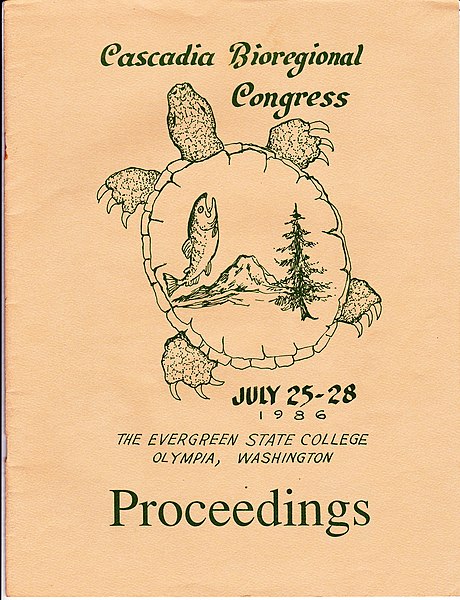A bioregion is an ecologically and geographically defined area that is smaller than a biogeographic realm, but larger than an ecoregion or an ecosystem, and is defined along watershed and hydrological boundaries. People are counted as an integral part of the definition of a bioregion.
Proceedings from the first Cascadia Bioregional Congress at Evergreen University in 1986.
An ecoregion is an ecologically and geographically defined area that is smaller than a bioregion, which in turn is smaller than a biogeographic realm. Ecoregions cover relatively large areas of land or water, and contain characteristic, geographically distinct assemblages of natural communities and species. The biodiversity of flora, fauna and ecosystems that characterise an ecoregion tends to be distinct from that of other ecoregions. In theory, biodiversity or conservation ecoregions are relatively large areas of land or water where the probability of encountering different species and communities at any given point remains relatively constant, within an acceptable range of variation .
Ecoregions are also known as "ecozones", although that term may also refer to biogeographic realms.
The Ötztal Alps, a mountain range in the central Alps of Europe, are part of the Central Eastern Alps, and can both be termed as ecoregions.
A conifer forest in the Swiss Alps (National Park).
Terrestrial Ecoregions of the World (Olson et al. 2001, BioScience)
View of Earth, taken in 1972 by the Apollo 17 crew. Approximately 71% of Earth's surface (an area of some 361 million square kilometers) consists of ocean





